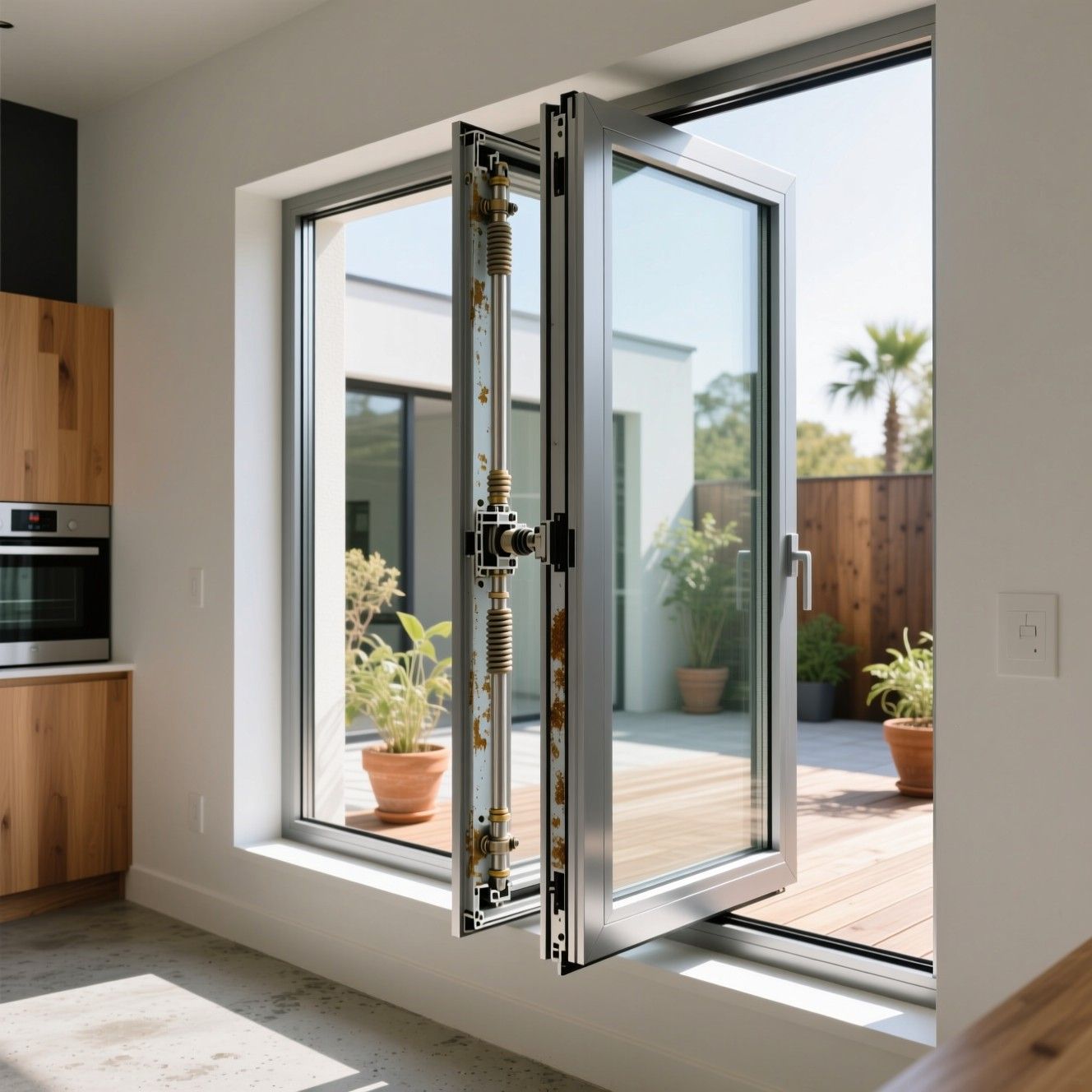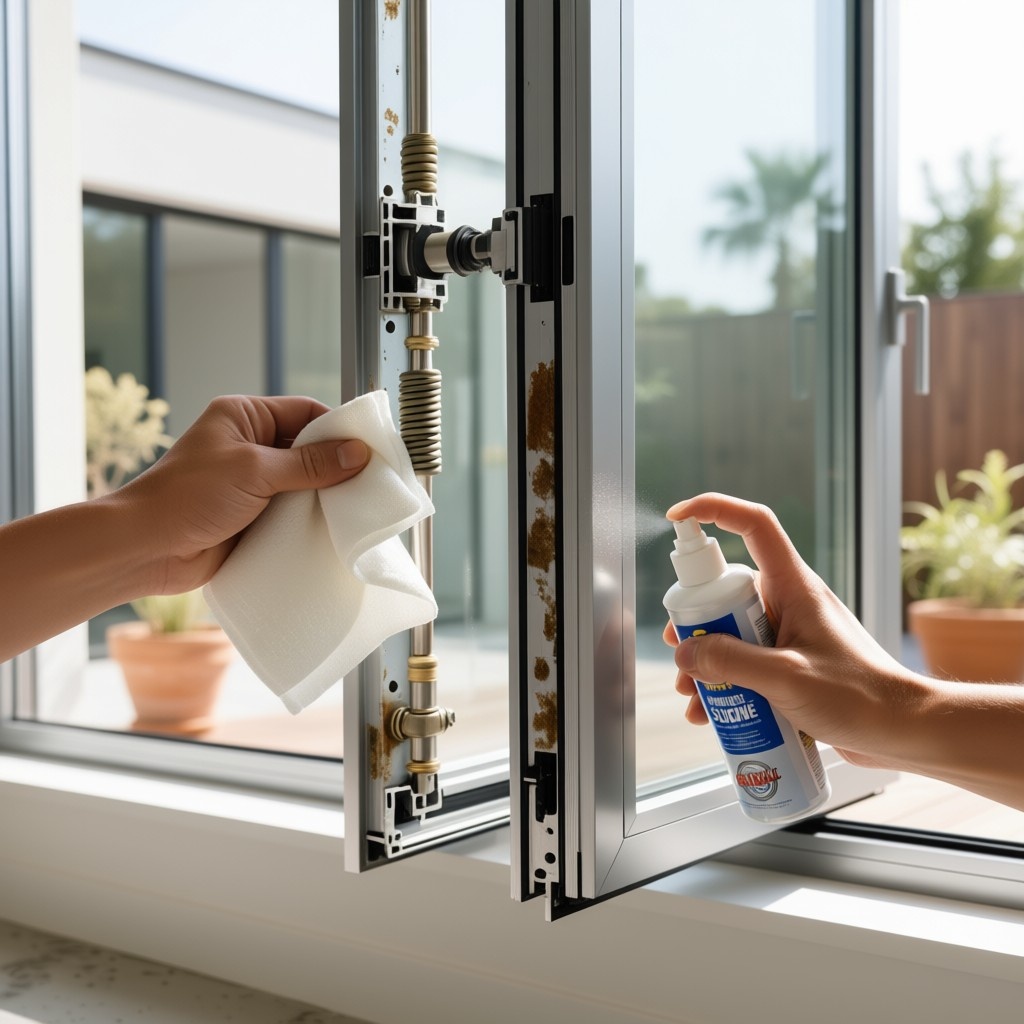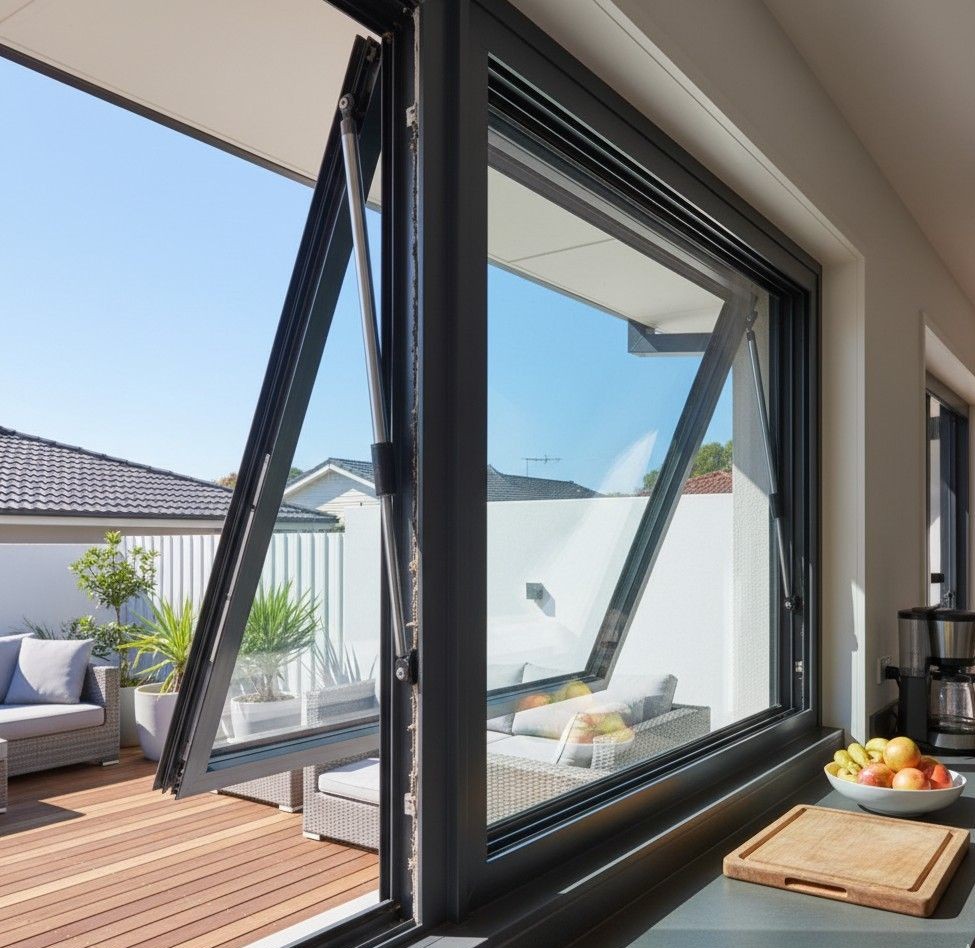Gas strut windows are admired for their sleek design, smooth lift, and ability to connect indoor and outdoor spaces seamlessly. From modern homes to busy cafés and rooftop bars, they’ve become a go-to choice for functionality and style.
But over time, problems can appear. Struts lose pressure, seals wear down, and frames fall out of alignment. Left unchecked, these issues turn effortless openings into safety risks, energy loss, and costly repairs.
The good news is that most of these challenges are predictable and preventable. By understanding common problems, spotting early signs, and applying the right fixes and maintenance routines, gas strut windows can stay reliable and long-lasting in both residential and commercial settings.
Key Takeaways:
- Gas strut windows use pressurized cylinders to lift sashes upward, creating wide openings and seamless indoor-outdoor transitions.
- Common issues include strut failure, misalignment, worn seals, surface corrosion, and lack of routine maintenance.
- Preventive care requires cleaning, silicone lubrication, strut inspections, and seal replacement to ensure long-term performance.
- Applications span residential kitchens, patios, rooftops, and commercial restaurants, bars, hotels, and retail serving counters.
What Are Gas Strut Windows?
Gas strut windows, also called flip-up windows or top-hinged pass-through windows, are designed with hydraulic-like struts filled with compressed gas. These struts act as counterbalances, allowing the sash to lift effortlessly and stay in place without manual support.
Key Benefits of Gas Strut Windows
- Effortless operation: One-handed lift with smooth action.
- Wide openings: Maximize airflow and natural light.
- Uninterrupted views: No vertical or horizontal obstructions.
- Versatility: Suitable for kitchens, patios, retail counters, and hospitality spaces.
For a closer look at available configurations and styles, explore modern gas strut windows designed for both residential and commercial use.

How Gas Strut Mechanisms Work?
Understanding the mechanics helps explain why problems occur:
- Gas Cylinder: A sealed tube filled with nitrogen gas.
- Piston Rod: Extends and retracts to control movement.
- Valve System: Maintains smooth, controlled action.
- Mounting Brackets: Secure the struts between the frame and sash.
When the sash is lifted, the pressurized struts offset its weight, holding it firmly in position. If seals degrade or the pressure drops, the system loses balance leading to the most common problems.
Common Problems with Gas Strut Windows
Strut Failure or Weakening
Over time, nitrogen gas can leak through microscopic valve imperfections or worn seals. This reduces pressure and compromises performance.
- Symptoms: Windows won’t stay open, slam shut, or feel heavy to lift.
- Fix: Replace struts with units rated for the window’s exact size and weight.
Alignment Problems
Improper installation or building shifts can throw frames out of alignment.
- Symptoms: Uneven closure, difficulty latching, or gaps along the sash.
- Fix: Realign hinges and brackets. A precise installation guide helps prevent these issues during setup.
Worn Seals and Weatherstrips
Rubber seals degrade with exposure to sun, moisture, and regular use.
- Symptoms: Drafts, water leakage, or fogging around the glass.
- Fix: Replace seals promptly to maintain insulation and prevent damage.
Surface Damage and Corrosion
Coastal salt air and harsh cleaning chemicals can corrode finishes.
- Symptoms: Rust spots, discoloration, or rough frame texture.
- Fix: Choose corrosion-resistant finishes and clean with non-abrasive products.
Lack of Maintenance
Skipping regular care is the fastest path to failure.
- Symptoms: Jerky lifting, creaks, or premature strut wear.
- Fix: Follow structured maintenance routines including cleaning, lubrication, and inspections.
Troubleshooting Checklist
When performance declines, use this quick inspection list:
- Check struts – Do they hold weight or collapse?
- Inspect seals – Any cracks, gaps, or peeling?
- Examine alignment – Do frames close evenly?
- Test operation – Any resistance or noisy movement?
- Review finish – Look for corrosion, fading, or scratches.
Preventive Maintenance for Long-Term Use

Cleaning & Surface Care
- Wipe frames with mild detergent.
- Avoid abrasive cleaners or rough pads.
- In coastal regions, apply protective wax.
Lubrication
- Use silicone-based lubricants on hinges every 3–4 months.
- Avoid petroleum-based oils that trap dust.
Strut and Seal Inspection
- Test struts annually for firmness.
- Replace worn struts every 3–5 years.
- Inspect weatherstrips after storms or extreme weather.
Comparison: Gas Strut Windows vs. Alternatives
| Feature | Gas Strut Windows | Awning Windows | Sliding Windows | Bifold Windows |
| Opening Style | Full upward lift | Outward tilt | Side-to-side track | Folding panels |
| Space Efficiency | No lateral clearance | Requires swing space | Requires wall space | Needs stacking area |
| Ease of Use | One-handed lift | Crank or push | Moderate effort | Multiple handles |
| Outdoor Integration | Excellent | Limited | Moderate | Wide span |
| Maintenance | Regular strut checks | Moderate | Low | High |
| Aesthetics | Sleek, modern | Traditional | Functional | Dramatic |
For entertainment areas where wide openings are essential, strut-supported systems consistently outperform alternatives.
Commercial Applications of Gas Strut Windows
Gas strut windows thrive in service-oriented environments where efficiency and design matter.
Restaurants and Cafés
They create seamless serving counters, letting staff serve customers directly onto patios or sidewalks.
- Advantages: Faster service, improved ventilation, customer appeal
- Considerations: Frequent use means more regular strut replacement
Bars and Rooftop Lounges
Wide, flip-up panels create uninterrupted views and quick service access in high-end venues.
- Ideal for: Rooftops, beach bars, poolside lounges
- Benefits: Panoramic views, no obstruction of customer flow
- Best choice: Durable outdoor strut windows with corrosion resistance
Retail and Showrooms
Shops can open up their storefronts during business hours, encouraging foot traffic and visibility.
- Benefit: Unique storefront appeal
- Example: Pop-up shops using flip-up windows for indoor-outdoor transitions
Hotels and Resorts
Gas strut systems enhance guest experiences in luxury spaces.
- Applications: Pool bars, garden lounges, ocean-facing dining areas
- Benefit: Luxurious design + functional airflow
- Solution: Commercial-grade custom products with international certifications
Residential Applications of Gas Strut Windows
Homeowners increasingly embrace these windows for lifestyle-driven benefits.
Kitchens and Serving Counters
Flip-up systems connect kitchens to patios, simplifying indoor-outdoor dining.
- Benefit: Seamless entertaining
- Tip: Use energy-efficient glazing for insulation
Patios and Decks
Transform living spaces into entertainment hubs with wide, openable wall sections.
- Creates natural flow between indoors and outdoors
- Enhances gatherings and events
Rooftops and Balconies
In urban homes, gas strut windows maximize rooftop usability with panoramic openings.
- Adds natural ventilation
- Expands functionality of smaller spaces
Home Offices and Studios
Perfect for remote workers and creatives who need airflow and light.
- Application: Studios, home offices, workshops
- Example: Artist’s studio benefiting from natural light and outdoor connection
Bedrooms and Living Rooms
Though less common, gas strut windows add dramatic flair in living areas.
- Benefit: Full garden or poolside views
- Best for: Homes prioritizing luxury design
For best long-term residential performance, structured care routines are essential.
Why High-Quality Manufacturing Matters
Low-quality struts or poor installation often cause repeat issues. Choosing premium manufacturing ensures:
- Correctly rated struts for longevity
- Precision-engineered frames for stability
- Weather-resistant finishes for durability
- Certified products that meet global standards
Explore Oridow’s full product range designed for both residential and commercial applications.
Why Oridow Is a Trusted Partner
Oridow, a China-based manufacturer of aluminum windows and doors, supplies wholesalers, builders, and architects worldwide. Their reputation is built on:
- Customization: Tailored systems for unique designs
- Certifications: Compliance with international standards
- Durability: Engineered for demanding environments
- Versatility: From strut systems to full outdoor solutions
For bulk procurement or tailored designs, Oridow delivers performance-driven fenestration trusted across global projects.
FAQs
1. How long do gas strut windows last?
Most systems last 10–15 years with proper care. The struts typically require replacement after 3–5 years of use.
- Frames: 10–15 years+
- Struts: 3–5 years
- Dependent on usage and climate
2. Can gas struts be repaired or do they need replacement?
They are sealed units. Once pressure is lost, replacement is the only solution.
- No repair option
- Replacement required
- Must match load rating
3. Are gas strut windows suitable for coastal or humid climates?
Yes, provided high-quality finishes and regular cleaning are applied.
- Choose powder-coated or anodized finishes
- Clean regularly to prevent salt buildup
- Apply protective waxes where needed
4. Do gas strut windows provide good insulation?
Yes, especially when fitted with quality seals and double glazing.
- Double glazing = better thermal control
- Weather seals prevent drafts
- Reduced heating and cooling costs
5. Can I install gas strut windows myself?
While possible for small units, professional installation is strongly recommended.
- Ensures correct alignment
- Prevents strut miscalibration
- Guarantees smoother operation
6. What are the best applications for gas strut windows?
They excel in spaces that benefit from wide, open-air transitions.
- Residential: Kitchens, patios, rooftops
- Commercial: Restaurants, bars, resorts
- Ideal for serving counters
7. How do I maintain gas strut windows for long-term use?
Simple upkeep extends their life significantly.
- Wipe frames with mild cleaners
- Lubricate hinges every 3–4 months
- Inspect struts annually
- Replace seals every 5–7 years





